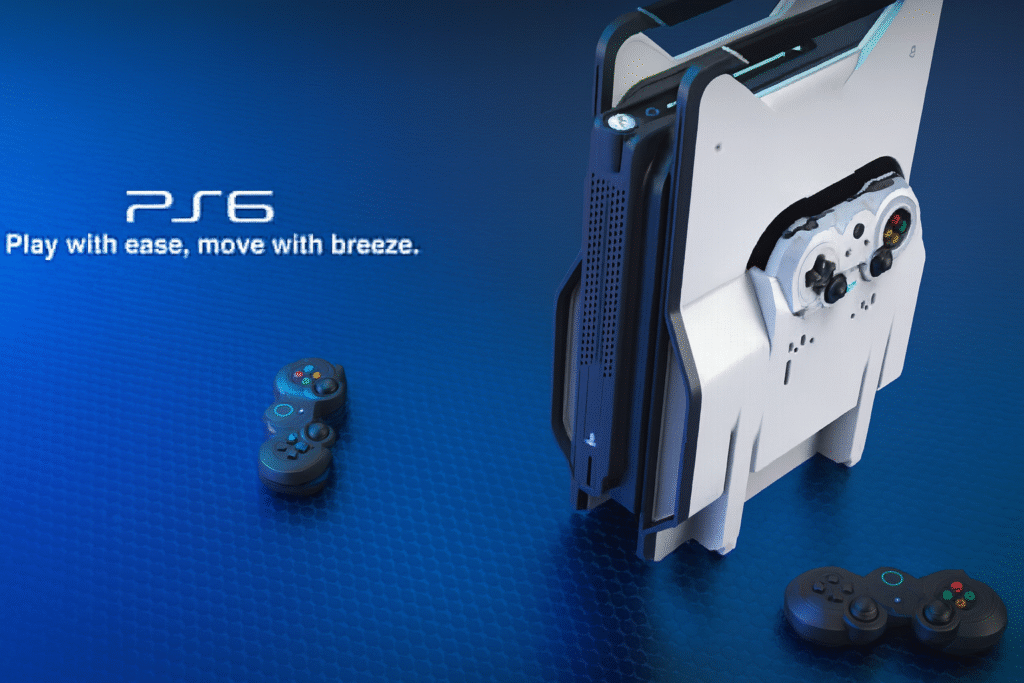For decades, console leaks have been a ritual of gaming culture. Every few years, before the curtain rises officially, a mixture of insider whispers, CAD mockups, and bold predictions floods the discourse. This week, a new entry in that lineage arrived: the alleged full specifications for Sony Interactive Entertainment’s PlayStation 6, codenamed Orion.
The source? Content creator Moore’s Law Is Dead (MLID), a personality both respected for past AMD scoops and criticized for sometimes speculative flourishes. The leaked numbers are staggering, bordering on implausible: an AMD-built system-on-chip on TSMC’s 3nm node, 52–54 RDNA 5 compute units running at up to 3.0 GHz, 30–40 GB of GDDR7 memory, and ray tracing performance between six to twelve times that of the PlayStation 5.
If even half of these details prove true, Sony’s next-gen console would represent the largest single-generation performance leap in PlayStation history. Yet the very extremity of the claims forces us to ask: are we glimpsing the future, or are we chasing shadows?
The Leaked Specs: What Orion Allegedly Holds
The PS6, in its “Orion” guise, is described as a 160 W console powerhouse built around a monolithic AMD APU. That APU would combine Zen 6c performance cores with Zen 6 LP efficiency cores — a hybrid design reflecting trends in PC CPUs and mobile SoCs alike.
- CPU: Roughly 7–8 Zen 6c cores, plus 2 low-power cores for OS tasks.
- GPU: RDNA 5 architecture with 52–54 compute units, effective throughput ~34–40 TFLOPs.
- Memory: A 160-bit bus tied to GDDR7 running at 32 GT/s, delivering ~640 GB/s bandwidth.
- RAM Amount: Between 30 GB and 40 GB depending on SKU.
- Ray Tracing: Claimed 6–12× PS5 performance.
- Power Draw: Around 160 W TBP.
- Launch Window: Manufacturing in 2027, retail release Fall 2027 or early 2028.
Even stripped of context, these numbers are aggressive. By comparison, the PS5 GPU offers ~10.3 TFLOPs, 16 GB of GDDR6 memory, and relatively modest ray tracing acceleration. If Orion really delivers up to 40 TFLOPs, that represents a 4× raw compute leap — plus the radical boost in RT efficiency.
Historical Perspective: Sony’s Generational Jumps
To gauge realism, it helps to revisit history.
- PS2 → PS3 (2000–2006): From 147 MHz to 3.2 GHz Cell Broadband Engine, a once-in-a-generation shift that came with sky-high costs.
- PS3 → PS4 (2006–2013): A pragmatic pivot to x86 architecture, simplifying development and settling for mid-range PC-like specs.
- PS4 → PS5 (2013–2020): A doubling in memory (8 → 16 GB), adoption of SSD, and leap to RDNA 2 GPU with ~10 TFLOPs.
Seen against this, Orion’s purported specs aren’t just a generational step — they look like a PS5 Pro → PS6 Ultra → PS7 jump, all rolled into one.
The Case for Believability
1. Industry Roadmaps Align
Sony’s long-term partnership with AMD makes the Zen 6 + RDNA 5 pairing plausible. By 2027, TSMC’s 3nm process will be mature, and GDDR7 will be the industry standard for both consoles and GPUs.
2. Ray Tracing Is the Future
If PS5 was about establishing ray tracing, PS6 may be about making it default. MLID’s claim of a 6–12× jump in RT is not entirely fantasy — RDNA 3 and 4 already show disproportionate RT improvements generation over generation.
3. Efficiency Cores Make Sense
Integrating low-power Zen 6 cores for background tasks fits a broader industry move toward heterogeneous compute. Windows PCs, Apple Silicon, even Qualcomm chips now blend performance and efficiency cores.
4. Power Target Feels Right
160 W is high, but not insane. The PS5 pulls ~200 W under load. If Sony manages thermals effectively — larger heatsinks, vapor chambers — the PS6 can feasibly live within that envelope.
The Case for Skepticism
1. Clock Speeds vs Thermals
Running 52–54 CUs at nearly 3 GHz while staying inside 160 W feels optimistic. Desktop GPUs achieve such feats with massive cooling and higher wattages. A compact console form factor may struggle to sustain this.
2. Memory Bandwidth Math
A 160-bit bus is unusual — neither wide enough to rival PC GPUs nor cheap enough for mass-market consoles if paired with bleeding-edge GDDR7. It could prove a bottleneck.
3. Ray Tracing Hype
A 12× jump in RT would require not only hardware but software adoption. Developers must code engines that exploit it, and gamers must own TVs and displays capable of showcasing the difference. Otherwise, it’s overkill marketing.
4. Price Feasibility
If Orion really ships with 40 GB of GDDR7, it could drive retail cost beyond $700 — a dangerous gamble for a mass console. Sony has always walked the line between premium power and market affordability.
Culture
The Orion leak highlights another undercurrent: AI acceleration. Sony, like Microsoft, may be looking to integrate machine learning cores into the console pipeline. Upscaling (think DLSS, FSR), denoising for ray tracing, and even generative asset creation could become staples of next-gen game development.
If the leak is accurate, Orion would not just compete with GPUs — it would compete with the AI-enabled future of PC gaming.
Industry Ramifications
- Developers Get Ambitious Again
More power means fewer compromises. Studios could design games with RT global illumination as a baseline, eliminating fallback “rasterization-only” modes. - Microsoft vs Sony Escalates
Xbox will not stand still. If PS6 is Orion, Microsoft will answer with its own AI- and RT-forward console, likely leveraging similar AMD silicon or even Nvidia partnerships. - The Death of Mid-Gen Refreshes?
If Orion really is this powerful, Sony may skip a PS6 Pro. Why bother, when the baseline is already a monster? - Cloud Gaming Redefined
With Orion hardware, Sony could feed PS6-level performance into PlayStation Plus cloud tiers, merging local and remote gaming ecosystems.
Impression
Leaked specs are tantalizing, but history teaches caution. The PS5’s early leaks suggested 20+ TFLOPs — the real console arrived with 10.3. Similarly, Orion’s true numbers may land closer to 30 TFLOPs GPU, 24–32 GB RAM, and 4–6× RT uplift. Still impressive, but grounded.
The only certainty is that Sony has entered the design and prototyping phase for PS6. Developers will need dev kits years ahead of launch, and specs will crystallize by 2026.
Dream Machine or Mirage?
The PlayStation 6 “Orion” leak is both exhilarating and unbelievable. On paper, it reads like a console forged not just for the next cycle, but for the next era: AI-assisted, ray tracing-native, and designed to straddle local hardware and cloud performance.
Yet the leap is so dramatic that skepticism is warranted. Manufacturing realities, pricing, and market appetite all conspire to temper ambition.
Still, leaks like this matter because they set expectations and spark imagination. Whether Sony delivers the Orion exactly as whispered or trims it for reality, the conversation signals what gamers demand: not incrementalism, but bold, transformative leaps.
And perhaps, just perhaps, the leak reminds us of something else: consoles are no longer just plastic boxes with silicon inside. They are cultural artifacts, technological statements, and promises of worlds yet to be explored.
No comments yet.








